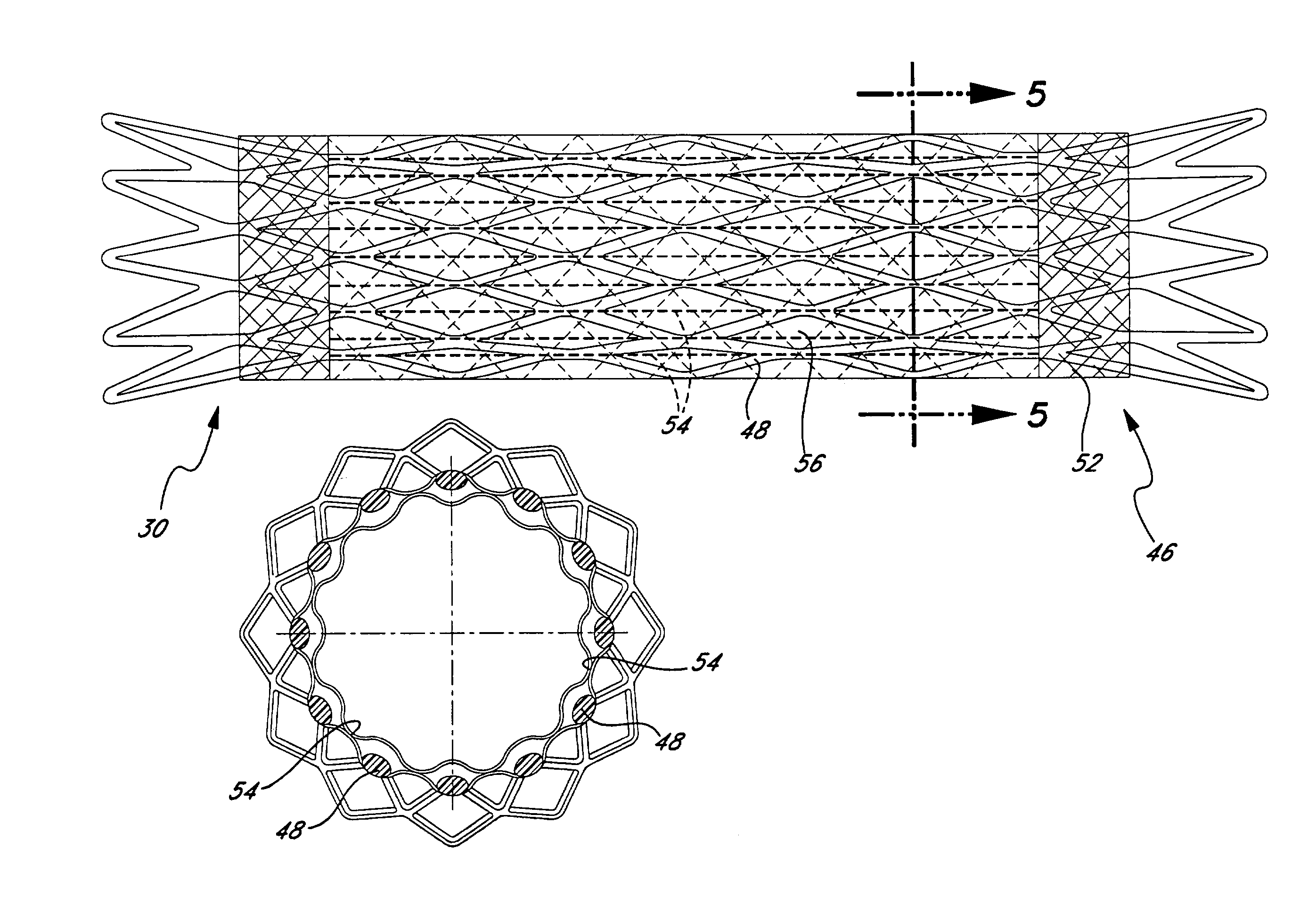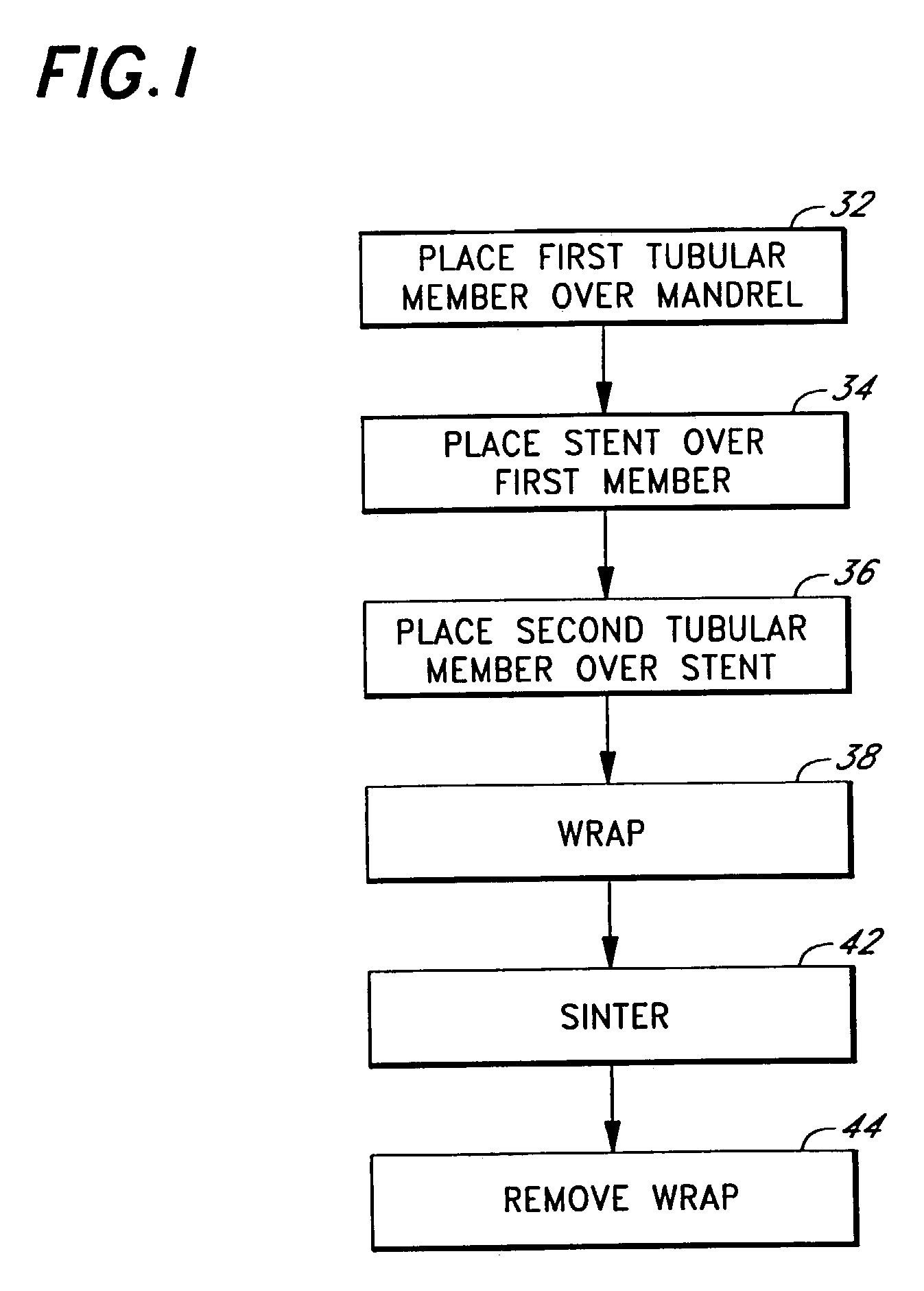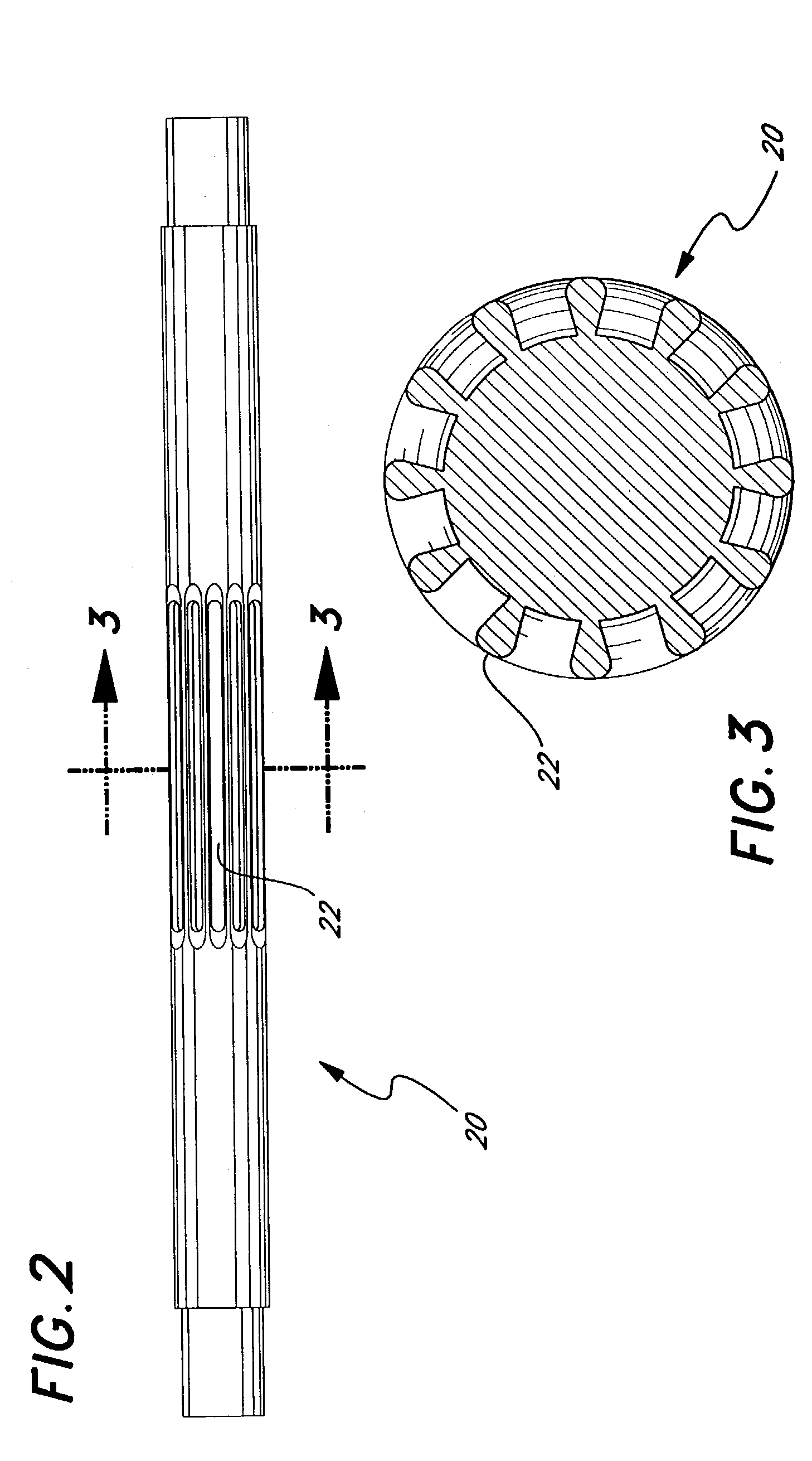Selective adherence of stent-graft coverings
a stent and covering technology, applied in the field of endoluminal stent graft devices, can solve the problems of lack of other desirable features, lack of additional means, and some subsequent retraction, and achieve the effect of preventing restenosis or local thrombosis
- Summary
- Abstract
- Description
- Claims
- Application Information
AI Technical Summary
Benefits of technology
Problems solved by technology
Method used
Image
Examples
Embodiment Construction
[0061]The selective adherence encapsulation of the present invention is an improvement of the total adherence method taught in U.S. Pat. No. 5,749,880 that is incorporated herein by reference. That patent discloses a method for encapsulating a support stent by placing the stent over a first tubular member of unsintered ePTFE and then placing a second tubular member of unsintered ePTFE coaxially over the stent so that the stent is sandwiched between two layers of ePTFE. Radial force is applied either internally or externally to force the first tubular member into contact with the stent and into contact with the second tubular members through openings in the stent or, respectively, to force the second tubular into contact with the stent and into contact with the first tubular member through openings in the stent. Finally, the compound structure is exposed to an elevated temperature to bond the first tubular member to the second tubular member wherever they are pressed into contact. In...
PUM
| Property | Measurement | Unit |
|---|---|---|
| temperature | aaaaa | aaaaa |
| outer diameter | aaaaa | aaaaa |
| biocompatible | aaaaa | aaaaa |
Abstract
Description
Claims
Application Information
 Login to View More
Login to View More - R&D
- Intellectual Property
- Life Sciences
- Materials
- Tech Scout
- Unparalleled Data Quality
- Higher Quality Content
- 60% Fewer Hallucinations
Browse by: Latest US Patents, China's latest patents, Technical Efficacy Thesaurus, Application Domain, Technology Topic, Popular Technical Reports.
© 2025 PatSnap. All rights reserved.Legal|Privacy policy|Modern Slavery Act Transparency Statement|Sitemap|About US| Contact US: help@patsnap.com



